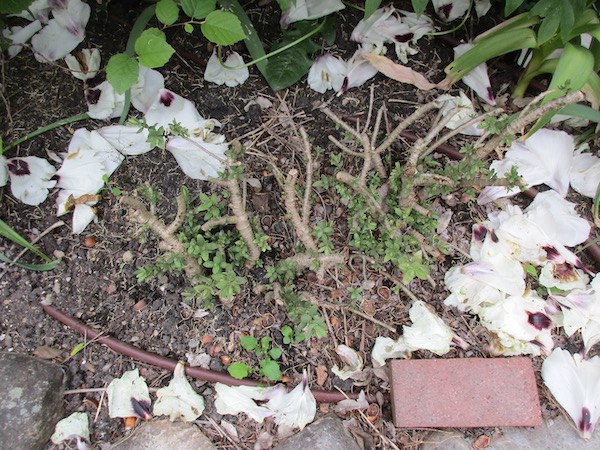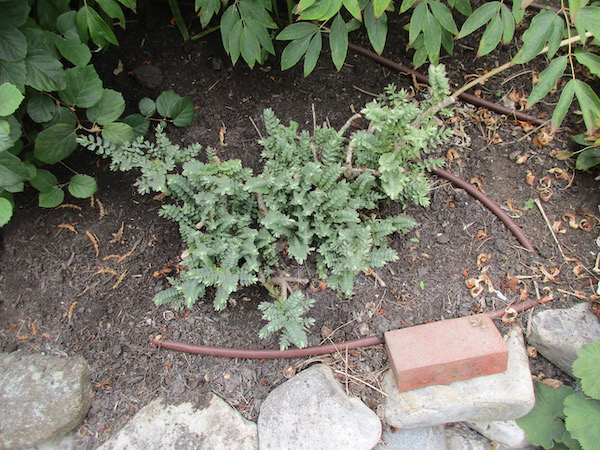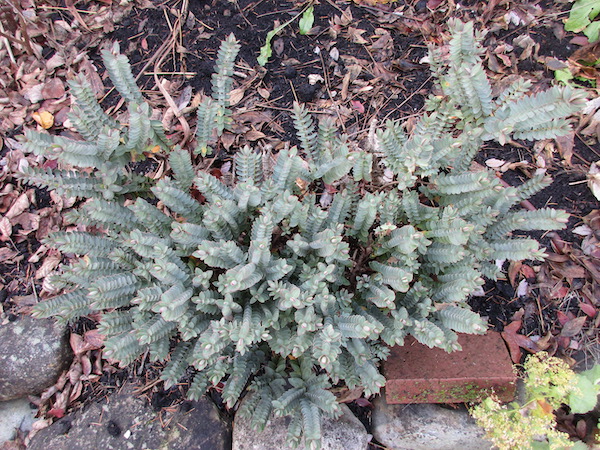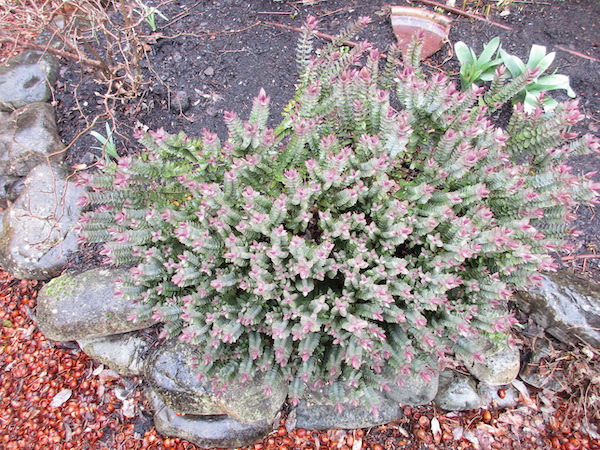Plant of the Month: February 2021
|
| Hebe |
| Hebe |
PLANTAGINACEÆ; Plantain Family
|
| Though the genus Hebe has been defined traditionally as a southern hemisphere shrubby relative of the herbaceous northern hemisphere genus Veronica, recent preference among taxonomists is to lump (combine) the two genera. In the splitting option, Hebe are some 70 - 100 species of Australasian neat evergreen shrubs (small trees 40' feet+ tall rarely), nearly all in New Zealand; 1 species between New Zealand & South America; 2 South American species. Many Hebe hybrids are grown as ornamentals. In the lumping or broad sense, Veronica contains at least 459 species, including some eaten as wild vegetables. If the lumping approach is chosen, one may call the Hebe species "Shrubby Veronica. Shrub Speedwell. Hedge Veronica. Evergreen Veronica." |
| Hebe was named after the Greek goddess of youth. All species are evergreen woody plants. Leaves vary widely in color, size, density --but are always opposite, stalkless, in orderly rows, as if designed by a detail-oriented engineer. Flowers are small but plentiful; purple, blue, red, pink or (usually) white; almost never scented. |
| Most Hebe are damaged badly or killed by severe winter cold in the North. Aridity or extreme heat also are too much for most. Other than that, a few fungal pathogens hurt some. Hebe are, in their preferred cool, moist climates, tough garden plants, cared for easily. They seldom reseed, and in Seattle never do so weedily. Most do grow leggy, sprawling clumsily and getting too tall and especially wide. The ideal time to prune them back severely, to rein them in, is in early spring, right before their main surge of growth commences. I show photos below of a shrub so treated one May, and its response. |
| Hebe have no edibility reported in books (except Tanaka's erroneous Hebe angustifolia, which is really the far east Asian Veronica linariifolia Pall. ex Lk.). Little edibility reporting is on blogs. For example, some New Zealanders eat the very young shoots and leaves of H. stricta (Benth.) L.B. Mre. (Maori: Koromiko), though mainly to get relief from eating too much other food. Tasting the young tender leaves raw of over half a dozen Hebe species & hybrids raw, I found all astringent, bland tasting or (usually) more or less bitter, and some acrid. It may be that some species or hybrids bear tender young leaves worth eating raw, or that can be rendered wholesome greens with a quick boiling. |
| Several species & hybrids are potted and grown indoors to a limited extent, the most common being Hebe x Andersonii (Lindl. & Paxt.) Ckn. It dates from 1856. It bears leaves to 4 inches long, gray green, edged irregularly creamy white. Flowers in narrow clusters, violet, fading to white. |
If you enjoy tidy-looking shrubs, and your climate is broadly comparable to that of New Zealand's, Hebe offers rich diversity for your ornamental garden. But Hebe are not inclined to grow indoors willingly, nor bounteous of food. Some thrive in containers on decks and balconies, or in window boxes.
Back |

Hebe glaucophylla cut back hard in May 2018; photo by ALJ
|

Hebe glaucophylla recovering in August 2018; photo by ALJ
|

Hebe glaucophylla in December 2019; photo by ALJ
|

Hebe glaucophylla in February 2021; photo by ALJ
|

Hebe 'Amy' flowers close up; photo by ALJ
|
|
|

